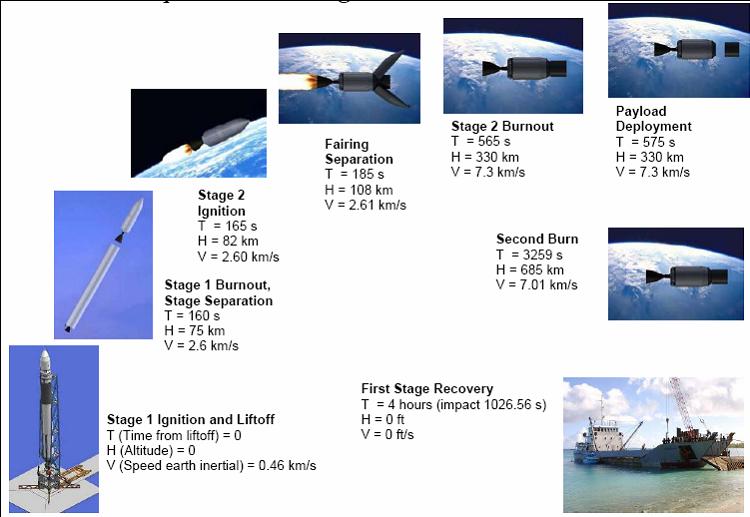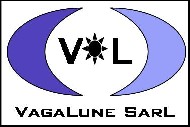| Overview |
| |
| Launch/Orbit |
| |
| Rover/Lander |
| |
| Communications |
| |
| Project Execution |
| |
| Project Management |
| |
| References |
|
| Rocket Launch |
| |
| The Falcon 1e rocket from Space X corp will launch from the Ronald Reagan Test Site (RRTS) in the Marshall islands (N 9.04817° E 167.74308°) at an inclination of 9.1°E toward an approximate Low-Earth Orbit (LEO) of 220km. This will allow VagaLune to send a payload mass, including both the Lunar Module (LM) and enclosed Moon Rover (MR), of about 730kg. (Please see the Falcon 1 Users Guide for more information). This will put us into our Low Energy Transfer Orbit (LETO)* (as opposed to a Hohmann Transfer) that will take the LM on its voyage to the moon. The LETO is beneficial to VagaLune because, although much research states that the Hohmann Transfer is efficient, our Falcon 1e rocket does not have the thrust magnitude to perform this quicker and more direct manoeuver. |
| |
From the Space X User's Guide, Fig. 4.8
 |
| |
| Edward Belbruno, a former Jet Propulsion Labs (JPL) researcher and a NASA consultant, is known for his advice to the Japanese Space Agency (ISAS) in coordination with J. Miller in getting the Hiten spacecraft to the moon in the early 90's. In the early 2000's, the European Space Agency (ESA) used a similar approach in sending their SMART-1 probe to the moon. |
| |
|

